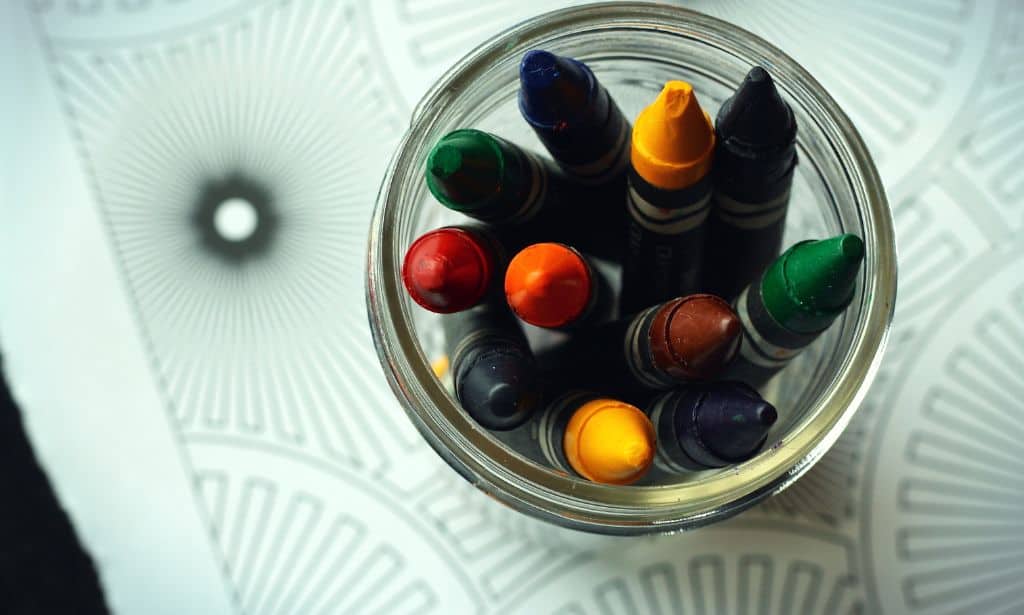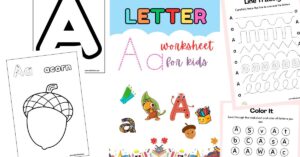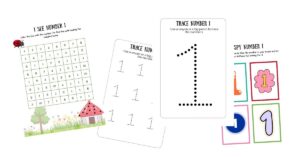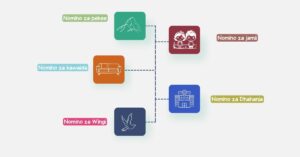Kids spend one-half of the entire school day doing paper and pencil activities. So, having the best writing equipment is not only handy but pivotal in helping them develop their literacy skills. Since preschool is a crucial habit-forming stage in any child’s life, having the right tools will help them learn essential skills such as how to write, draw, and color. But what size pencils or crayons should they use?
Children use big pencils and crayons during preschool because they are easier to hold and suitable for their muscle development. Big crayons allow them to write better since there is more space to hold, unlike small pencils and crayons, which can be harder to grasp because of the kids’ hand size.
When enrolling my first-born daughter (now a preteen) in preschool, I was clueless about the importance of big pencils and crayons. It took her teacher some time to help me understand how size comes into play when buying pencils and crayons for preschool.
I came to love these pencils and crayons for several reasons, and these are my top 7.
- 7 Reasons Why Children Use Big Pencils and Crayons
- 1. Big Diameter Pencils and Crayons are Beginner-Friendly
- 2. Beginner Pencils and Crayons Offer Better Grip
- 3. Big Pencils and Crayons are Easy to Coordinate
- 4. Children Develop Impressive Fine Motor Skills
- 5. Larger Pencils and Crayons Blend with the Big Workspaces
- 6. Pencils and Crayons with Bigger Diameters Eliminate Pain
- 7. Big Crayons and Pencils are Hard to Break
- When Do Preschool Children Transition to Smaller Pencils and Crayons?
7 Reasons Why Children Use Big Pencils and Crayons
Watching my kids learn how to write and color was my favorite activity. However, that wouldn’t have been possible without the right tools. The simple art of grasping pencils and crayons helps them develop motor skills. More importantly, big crayons and pencils are best suited for the following reasons:
1. Big Diameter Pencils and Crayons are Beginner-Friendly
Before fat pencils and crayons, your kid used their hands to draw with mud or gloop. The farthest they went was playing with sensory books. So, they need a slow introduction to using pencils and crayons. That’s why big crayons and pencils are best for preschoolers.
They are excellent for teaching preschoolers the basics of writing, coloring, and drawing. Of course, we don’t expect our babies to get it right from the start. However, a sure way to improve their writing skills is by using big crayons and pencils. They’ll slowly advance to smaller pencils as they grow.
2. Beginner Pencils and Crayons Offer Better Grip
Preschool kids have tiny hands. As such, larger pencils and crayons are easier to hold since kids are developing fine motor skills. In addition, bigger crayons help while learning how to form the perfect grip.
A good grip equals better handwriting. Since kids have less strength and coordination, working with bigger pencils helps them hold firmly. Finally, kids build the muscle strength necessary to hold a smaller pencil.

That said, teaching your child how to grip better takes strategy. Here are a few tips:
How to Teach Your Child Good Pencil Grip
- Let your child crumple scrap paper into tight balls.
- Use play dough to encourage them to pinch using the index finger and thumb.
- Provide squeezing clips and pegs to build muscle strength.
- Pop bubble wrap.
- Play games like checkers to encourage your child to grasp small objects between the index finger and thumb.
Fun Tip: Make fun art while teaching your kid good pencil grip. That’ll make the learning process even more fun.
3. Big Pencils and Crayons are Easy to Coordinate
When children feel confident while holding the crayon or pencil, they position it better to write and draw. I noticed that my kids found it easier to use thick pencils and crayons because they had a better grasp.
Moreover, more space between a preschooler’s hand and the pencil makes writing and coloring impossible. On the other hand, bigger pencils discourage young kids from exerting too much force on the pencil and using too many fingers. Ultimately, your child writes better and colors within the lines.
4. Children Develop Impressive Fine Motor Skills
Your child’s hand undergoes several changes after birth up to age seven. These changes affect the bones and muscles and improve as your child grows. As such, children can initially grasp wider objects for more extended periods, thus the preference for bigger pencils.
Gross motor skills, such as crawling and walking, take a shorter time to master compared to fine motor skills, as they need more practice. As these fine motor skills develop, your child’s writing skills improve due to muscle development.
5. Larger Pencils and Crayons Blend with the Big Workspaces
These surfaces, like large chalkboards, workbooks, or the floor, encourage gross motor movement. So, go big when teaching your kids how to write or color. I did that with my girls, and I saw tremendous growth. When using big crayons and pencils, it’s best to use larger workspaces too.
So, as your child learns how to move around the workspace, they develop fine motor skills. With time, they’ll learn to write better instead of scribbling. Besides, working with big pencils and spaces is more fun!
6. Pencils and Crayons with Bigger Diameters Eliminate Pain
Kids learn to write and color by pressing pencils and crayons on surfaces. Unfortunately, doing so with thin pencils hurts their little hands. If you insist they continue using thin crayons and pencils, your kids will hate writing altogether.
So, the solution is to buy your child big pencils and crayons. After all, comfort is key when teaching your kid something new. Moreover, you don’t want to hurt your preschooler’s hands.

7. Big Crayons and Pencils are Hard to Break
Big pencils and crayons are hard to break aside from being easy to hold. Since your child learns how to write and color by pressing the crayon hard on the surface, they need a stronger option. The larger surface area on bigger crayons prevents easy breakage.
Besides, big crayons are designed to be your kids’ first crayons. Therefore, they must withstand the force used when learning new writing skills.
When Do Preschool Children Transition to Smaller Pencils and Crayons?
Age 5 to 6 is the best time for preschoolers to start using smaller pencils and crayons. By then, your child knows how to hold these tools using the tripod pencil grasp. The thumb, middle, and index finger are all comfortably wrapped around the pencil or crayon at this point.
Still, if your child hasn’t mastered the art, don’t rush them. It means the arm muscles are not strong enough to handle the grip. Take time to encourage muscle development by using other activities. With time, they’ll switch to smaller or thinner pencils.
You now know why big crayons and pencils are the best for preschoolers. In my experience, the right tools and practice make writing, coloring, and drawing easier. If you wish to understand more about drawing for kids, read this article. I will guide you on the types of drawings for kids so you know what to expect.




